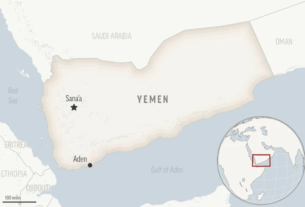Countries like the United States, the United Kingdom, and several European nations continue to provide military aid to Ukraine as the war with Russia intensifies. The U.S. has sent advanced weaponry, including artillery, drones, and anti-tank missiles, to support Ukraine’s defense. The ongoing influx of arms aims to help Ukraine resist Russia’s advances and reclaim occupied territories.
“The weapons are essential for Ukraine’s survival,” a senior U.S. official said during a briefing. The United States has pledged over $75 billion in military, humanitarian, and financial aid since Russia’s invasion in 2022. This includes high-tech systems such as Patriot missile batteries and armored vehicles designed to counter Russian artillery and airstrikes.
The U.K. has also contributed, providing advanced missile systems and tanks. British defense officials emphasize that these weapons are meant to give Ukraine the ability to protect its people and push back Russian forces. Some analysts warn that while this support strengthens Ukraine’s military capabilities, it also risks escalating the conflict.
Other European nations have sent a range of weapons, including smaller arms, drones, and ammunition. Poland has been a key partner, sending significant numbers of weapons, including tanks, to help Ukraine. Germany, which has been more cautious in its support, has now increased its aid, providing armored vehicles and training to Ukrainian forces.
Ukraine’s President Volodymyr Zelensky has repeatedly called for more heavy weaponry, including fighter jets and long-range missiles, to give his military an advantage over Russian forces. “We need weapons to push back the invaders,” Zelensky said in a recent speech to European leaders. However, some Western leaders hesitate, citing concerns over the potential for provoking Russia into further escalation.
Russia has condemned the continuous flow of arms to Ukraine, accusing the West of prolonging the war. Russian officials argue that these weapons contribute to a dangerous cycle of violence and that peace negotiations should be prioritized instead. Despite these objections, NATO allies continue to provide Ukraine with the resources it needs to defend itself.
While the U.S. and European nations remain committed to Ukraine’s defense, some American lawmakers have raised concerns about the financial costs of continued military aid. “We must be sure that our assistance is being used effectively,” said one member of Congress. With public opinion beginning to shift, U.S. officials are working to assure citizens that Ukraine’s success is vital for global security.
Ukraine’s army is heavily relying on these foreign supplies to match the might of the Russian military. The weapons sent by the West have allowed Ukrainian forces to target Russian supply lines, destroy tanks, and defend strategic areas. However, Ukrainian officials warn that they will need more support to sustain their efforts, especially with winter approaching.
The continuation of weapon shipments has made it clear that the international community views the war as a crucial point in defending democracy and resisting authoritarianism. Ukraine’s survival depends largely on the ability of these countries to keep sending the necessary supplies. For now, the flow of arms to Ukraine shows no signs of stopping.




